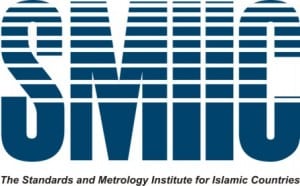Marketing to Muslims poses a challenge for retailers
As Best Buy recently discovered, reaching out to Muslims can
cause a backlash. Even those who champion the targeting of ads to the
community steer corporations away from the mainstream media.
By Raja Abdulrahim
Leafing through a Best Buy flier over the holiday season, Celena Khatib
spotted a small greeting near the bottom of the page: “Happy Eid
al-Adha.”
The good wishes for the important religious holiday
celebrated by Muslims seemed a milestone in U.S. marketing. “I finally
felt that they are recognizing Muslims like we are a part of this
community,” said Khatib, 31, a suburban Detroit mother of two. “We live
here, we spend our money here.”
But on Best Buy’s website, people
around the country posted contrasting views. “You insult all of the
heros and innocent who died 911 by celebrating a holiday of the religion
that said to destroy them!” wrote one. Many others said they would no
longer shop at Best Buy.
The controversy underscores the
continuing obstacles that retailers and other companies face in
marketing to a U.S. Muslim population estimated at more than 2.3 million
by the Pew Research Center.
Even an advertising-industry study
three years ago that urged companies to cash in on what was then the
community’s estimated $170-billion purchasing power got little traction.
Best
Buy is believed to be the first major retailer to market to Muslims
nationwide, and only a few are even dipping their toes into direct
ethnic local advertising.
Rather than pave the way for more
national advertising, the Best Buy ad seems to have reinforced the
pariah status that Muslims have in mainstream marketing and to serve as
an example of why “Happy Eid” won’t join “Merry Christmas” and “Happy
Hanukkah” as a mainstay in holiday advertising any time soon.
“Obviously
the Muslim market has some unique sets of challenges. . . . That’s not
something to be glossed over,” said Rafi-uddin Shikoh, founder of
DinarStandard, a consulting firm specializing in the Muslim market.
Other
immigrant and minority groups have faced similar treatment from
advertisers, but the U.S. Muslim community carries heavier baggage.
Since
the Sept. 11, 2001, attacks and with more recent incidents, such as the
Ft. Hood shooting and attempted Christmas Day plane bombing, the word
“Muslim” for some Americans is synonymous with terrorism. And that’s an
image that corporations don’t want attached to their brand names.
A
recent study by the Pew Forum on Religion and Public Life found that
35% of Americans have a negative view of Muslims and 45% believe Islam
is more likely than other religions to encourage violence.
Even
those championing marketing to Muslim consumers — like Shikoh — advise
Western companies not to do what Best Buy did. Instead, in a move that
seems both practical and defeatist, they recommend directing advertising
in ethnic and religious media and away from the mainstream.
“At
this point, I don’t know if there’s a real need for a national
campaign,” Shikoh said. “They are curious to see if there is a way to
tap into this market without risking their reputation or it backfiring
in any way.”
Best Buy has refused to discuss its holiday
advertising, though a brief statement on its website indicates it stands
by its Eid greetings: “Best Buy’s customers and employees around the
world represent a variety of faiths and denominations. We respect that
diversity and choose to greet our customers and employees in ways that
reflect their traditions.”
Other companies have recently come
under some fire for marketing to groups that some considered out of the
mainstream.
A Gap ad during the holiday season angered a
conservative Christian group for being too inclusive by referring to
Christian, Jewish, secular and pagan holidays with the line “Go
Christmas, Go Hanukkah, Go Kwanzaa, Go solstice.” Gap didn’t directly
address whether it had considered mentioning Eid al-Adha, which was
celebrated two weeks after the ad first appeared.
“We’ve been
down this road before with other groups,” said Jerome Williams, a
professor of advertising and African American studies at the University
of Texas at Austin.
In the 1960s, studies looked at whether
advertising that featured blacks would scare away white customers.
Companies don’t rush into new and unfamiliar markets, he said, but
rather tiptoe into them. And what will ultimately sway advertisers is
money.
“They’re not in the business of social justice,” he said.
“An advertiser does not want to do anything that will have negative
impacts on sales. . . . At the end of the day, they have to see if
they’ve gained more than they’ve lost.”
Mohammed Abdullah, event
coordinator for the first American Muslim Consumer Conference, believes
the Best Buy ad campaign will spur more outreach. The chain’s 13%
revenue increase in December over the previous December, he believes, is
a sign that the retailer wasn’t affected by any backlash.
“The growth strategy being employed by Best Buy will be copied, and few
will look at the Eid al-Adha holiday ad as a negative or a misstep now,”
said Abdullah, an assistant vice president at Deutsche Bank. “There
will absolutely be more outreach for this market segment.”
Some
companies have begun to test heavily Muslim markets. Crescent Foods in
Chicago, for instance, started selling its halal chicken products at six
Wal-Mart Superstores in Michigan and at ShopRite, a regional chain in
the Northeast.
During Ramadan, Western Union launched a travel
sweepstakes that would give customers who send money to the Middle East,
Pakistan and Bangladesh the opportunity to fly home or undertake the
annual Islamic hajj pilgrimage to Mecca. The sweepstakes lasted through
the Eid al-Adha holiday in November and awarded a $1,800 ticket voucher
to each of 14 winners.
“We know this is a very special holiday
for our Muslim customers,” said Maher Kayali, marketing manager for U.S.
to Middle East and Pakistan region. “So we gave them that opportunity
so they can go to Mecca.”
To promote the sweepstakes, Western
Union representatives visited mosques and held Ramadan dinners in Los
Angeles, New York, New Jersey and Detroit.
“If it’s
Ramadan-specific and Eid-specific, it’s directed to the ethnic media,”
Kayali said, insisting that such targeted marketing isn’t done out of
fear of fallout from the mainstream.
But promotions beyond the
small Islamic community face roadblocks. About six years ago, Syed
Rasheeduddin Ahmed, president of food certification firm Muslim Consumer
Group, added his halal symbol to the packaging of bread loaves with the
full name of his company written out.
Soon the company was
getting complaints, and Ahmed changed the symbol to include just the
initials MCG for loaves sent to the U.S. Those shipped to the Middle
East still retain his original symbol.
Constraints that
advertisers face here don’t exist in the Middle East, where Ramadan and
the two Eid holidays are times when brands such as Coca-Cola, Nestle and
McDonald’s are merged seamlessly with holiday greetings.
In
Turkey, Nestle launched a campaign during Ramadan, which began in late
August, that urged customers: “Enjoy the pleasure of Ramadan with Nestle
Chokella.” After sunset, when Muslims are allowed to break their fast,
Nestle employees went to public squares and neighborhoods to give out
samples of the chocolate spread on pita bread.
But a Nestle USA
spokeswoman said she wasn’t aware of any plans to target Muslim
consumers here.
Despite their large buying power, U.S. Muslims
remain a small percentage of the consumer market. And for now, it
appears advertising and products targeted toward them will remain in
small markets and niche media and publications.
“It’s almost like
a policy thing when you’re treated like a voting bloc or a consumer
bloc instead of just a quote-unquote Muslim or a shady person in the
background,” the American Muslim Consumer Conference’s Abdullah said
about marketing to U.S. Muslims. “It’s almost like a validating stance
— ‘Hey, you are American.’ It just makes you feel more accepted.”
raja.abdulrahim@
latimes.com



